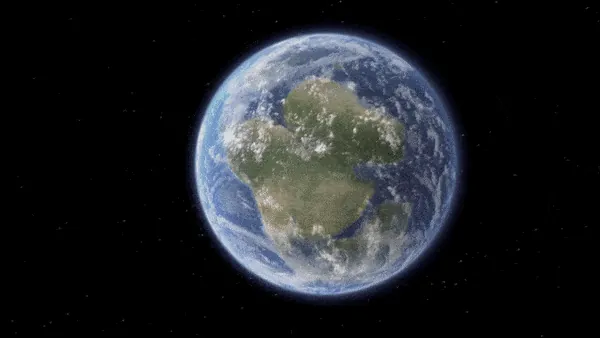
Cataclysmic Magma Eruptions that Split Pangaea: South America and Africa's Fiery Divorce
2025-04-04
Author: Rajesh
New research sheds explosive light on the dramatic breakup of the supercontinent Pangaea, revealing that the split between South America and Africa around 135 million years ago was not just a geological event, but a fiery outpouring of magma that significantly shaped our planet's history.
The geological upheaval released a staggering 3.8 million cubic miles (16 million cubic kilometers) of magma. This ancient lava is now solidified as volcanic rock found across South America, Africa, and resting on the Atlantic Ocean floor. In Namibia and Angola, some layers of this volcanic rock are impressively thick, measuring up to 0.6 miles (1 kilometer) in depth.
This new study, which synthesizes data from various sources across continents and ocean floors, indicates that the primary volcanic eruptions occurred between 135 million and 131 million years ago, peaking around 134.5 million years ago. This crucial timeline helps scientists correlate the volcanic activity with significant extinctions and climate shifts noted in the fossil record around the same time.
Lead author Mohamed Mansour Abdelmalak, a geologist from the University of Oslo, points to these eruptions as possible triggers for ecological upheaval: "We observe extinctions as well as major climate disruptions around 134.5 million years ago. Understanding the timing of magma emissions is vital for linking these events."
The research also uncovers signs of a "thermal anomaly" beneath the southern part of Pangaea. This anomaly is believed to have been influenced by what geologists refer to as a mantle plume—a column of superheated rock from deep within the Earth's mantle. Such plumes are known to weaken continental crust from below, suggesting that they played a critical role in the breakup process.
While the hypothesis connecting this thermal anomaly to the mantle plume is compelling, it remains contentious. "Our understanding is limited due to the lack of samples," Abdelmalak acknowledged. Particularly, there is a pressing need for samples from the deep ocean near Argentina and Uruguay, an area where deep-sea drilling has been sparse.
Today, Iceland provides a striking example of mantle plumes in action, where the Mid-Atlantic Ridge continues to pull apart as molten rock is extruded, forming land shaped by a mantle plume. This modern analogy illustrates the processes thought to have contributed to ancient volcanic activity and continental breakup.
To deepen our understanding of the massive eruptions that separated Africa and South America, further rock samples from both land and ocean depths are essential. Historically, major volcanic eruptions have acted as agents of warming by releasing greenhouse gases; however, a mysterious period of cooling coincided with the eruptions 134 million years ago. Scientists speculate that this could be attributed to rapid weathering of the eruptive rocks, which chemically interacted with the environment, pulling carbon dioxide out of the atmosphere.
With ongoing research, we continue to unravel the complex interplay of tectonic forces and environmental changes that not only reshaped our continents but continue to influence our planet's climate today. Stay tuned as science pulls back the curtain on Earth’s fiery past, revealing secrets that could reshape our understanding of geological processes in the Earth’s history!


 Brasil (PT)
Brasil (PT)
 Canada (EN)
Canada (EN)
 Chile (ES)
Chile (ES)
 Česko (CS)
Česko (CS)
 대한민국 (KO)
대한민국 (KO)
 España (ES)
España (ES)
 France (FR)
France (FR)
 Hong Kong (EN)
Hong Kong (EN)
 Italia (IT)
Italia (IT)
 日本 (JA)
日本 (JA)
 Magyarország (HU)
Magyarország (HU)
 Norge (NO)
Norge (NO)
 Polska (PL)
Polska (PL)
 Schweiz (DE)
Schweiz (DE)
 Singapore (EN)
Singapore (EN)
 Sverige (SV)
Sverige (SV)
 Suomi (FI)
Suomi (FI)
 Türkiye (TR)
Türkiye (TR)
 الإمارات العربية المتحدة (AR)
الإمارات العربية المتحدة (AR)